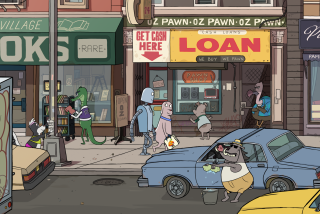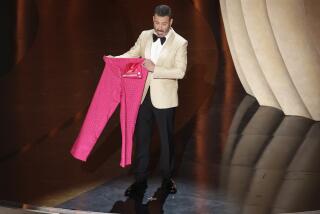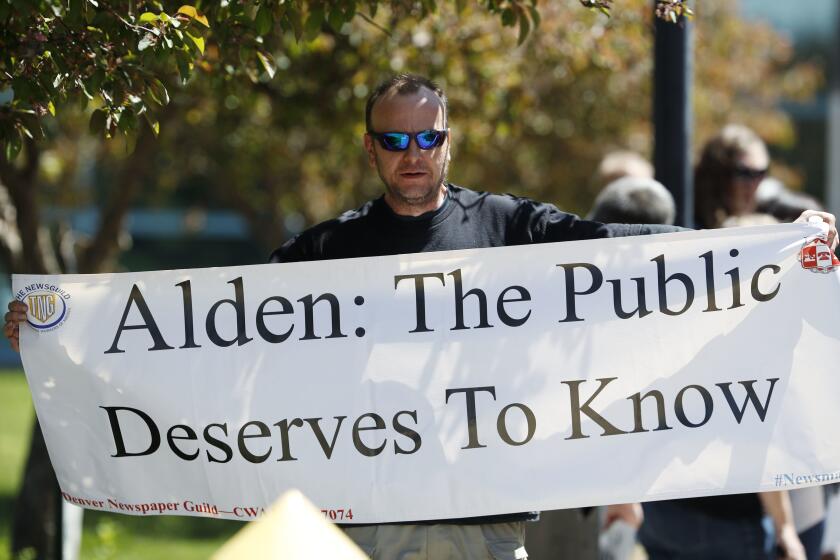Perspective: An animation producer says performance capture is not true animation
It seems that the Academy of Motion Picture Arts and Sciences is in a quandary. Steven Spielberg, a not inconsequential member, wants his upcoming performance capture (or motion capture, as it’s sometimes known) film, “The Adventures of Tintin,” to compete in the best animated picture category for next year’s Academy Awards. That’s understandable; there’s less competition, and it’s doubtful that an adventure film based on a European comic book would be nominated by the academy for best picture. Not that it might not deserve it, but it’s unlikely given academy history.
The academy’s quandary is also understandable. As much as it might like to accommodate Mr. Spielberg, it is not quite sure that performance capture is animation, and so there seems to be an internal debate on the question. There is, though, no need for debate. Performance capture is not animation.
The great French philosopher Voltaire, who participated in a few debates in his time, famously said, “If you are going to argue with me, define your terms.”
The New American Oxford Dictionary defines “to animate” as “bring to life.” The late, great animation director, Chuck Jones, with whom I worked off and on for several years, often defined animation as, “To breathe life into the lifeless.” Frank Thomas and Ollie Johnston, two of Disney’s Nine Old Men, called animation — and titled their book on the subject — “the illusion of life.” And many animators define animation simply as “frame-by-frame filmmaking.”
None of the above definitions can be applied to performance capture, which, as its name implies, captures and documents a real motion or performance in real time by a live actor and does not create the illusion of that motion or performance through frame-by-frame filmmaking. Robert Zemeckis’ “Beowulf” and “A Christmas Carol,” are recent examples, as is “Monster House,” which was executive produced by Zemeckis and Spielberg.
So wherein does the confusion lie in Mr. Spielberg’s head, not to mention the heads of critics, reporters and fans?
In my early days in animation, I promoted and publicized the art form. I can’t tell you how many reviews of animated films included this line: “The animation was great, the backgrounds were beautiful.” Note that between the two thoughts is a comma and not a period. This is the crux of the confusion. If people see any film that is not standard live action and has an illustrative look, even if fairly photo realistic, they tend to think that automatically makes it animation. But this is only looking at the surface of the screen.
It does not take in the deeper aesthetic qualities of a truly animated film, the core of those qualities being the simple fact that film animation is not a fine or graphic art but is, rather, a performance art. Animation’s real home among the arts is with acting, choreography, dance and music, not with painting, drawing or sculpture. The latter three are obviously aspects of an animated film, whether hand-drawn, stop-motion or computer-generated, but no more so than production design, set decoration, costume design and makeup are aspects of a live-action film. These aspects serve the performances of the film as the performances serve the story.
In 1979 I produced a program for the Los Angeles International Film Exposition called “The Animator as Actor.” I screened 10 animated shorts from the 1930s and ‘40s that featured really fine animation performances and followed the screening with a panel consisting of Thomas, Jones and Richard Williams, all masters of the art form. They illuminated the idea that the character animator was a performing artist whose art was created incrementally in a sequential series of poses (a pose is but a frozen moment of movement), deeply thought about and considered, which when presented at 24 frames per second created the illusion of a living character expressing a thought, action or emotion.
In a short essay in the program book I put it more abstractly: “As you view the classic character animation in this program, realize that what you are seeing are not drawings that move and act, but rather, movement and acting that is drawn.”
Performance capture does none of this. In performance capture you document a preexisting life; you do not create the illusion of it. You then overlay an illustrative look. That overlay on the surface is not the performance; the live actors contributed the performance and they did not do it frame by frame. That overlay is nothing but a special effect that incorporates production, character and costume design.
The frame-by-frame creation and manipulation of the illusion of life, of action, thought and emotions, is an incredible and intensely thrilling art form. In true animation, whether it be the vaudeville fables of the Looney Tunes, the fairy-tale romances of Disney or the deeply human performances in Pixar’s “The Incredibles” and “Up,” life is created literally from scratch — the scratch of a pencil on paper — and should not be confused with the embellished documentation of life preexisting.
To include a performance capture film in the category of best animated picture would be a mistake; for it to be nominated and win would be a travesty. It can only diminish the true art of animation and further confuse the audience about what animation really is and, worse, delay even longer a true appreciation for this art form, which still, I believe, has not been achieved.
———————————————————————————————————
Leiva spent more than 20 years programming, promoting and producing animation. He was the director of animation development for producer Gary Kurtz, the president of Chuck Jones Productions and a producer on “Space Jam” starring Bugs Bunny and Michael Jordan. Currently a novelist, his next book, “Traveling in Space” will be published this fall by Blüroof Press.
More to Read
The biggest entertainment stories
Get our big stories about Hollywood, film, television, music, arts, culture and more right in your inbox as soon as they publish.
You may occasionally receive promotional content from the Los Angeles Times.










